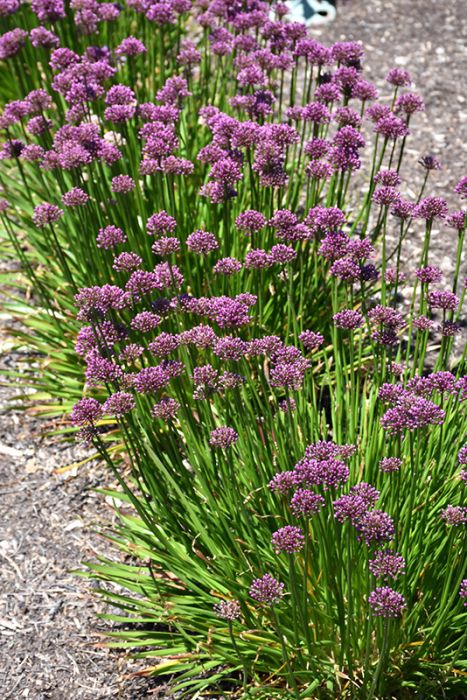Top Ten Boulevard Plants
A list to help you visualize the possibilities of boulevard plants!



Out of stock
Coming soon, still growingA dwarf cultivar with violet purple flowers on dark purple stems. Deer and rabbit resistant.
Discover an unparalleled selection of perennials at Gertens! With the largest variety in Minnesota, we offer endless options of colorful perennials, natives, and pollinator plants to beautify your garden year after year. From vibrant flowers to lush foliage, our perennials are perfect for adding beauty and charm to your outdoor space. Visit Gertens today and see why we're known as Minnesota's Destination Garden Center!
Windy City Ornamental Onion | Allium 'Windy City'
Plant Height: 8 inches
Flower Height: 16 inches
Spread: 16 inches
Sunlight: full sun
Hardiness Zone: 4b
Other Names: Flowering Onion
Brand: Gertens
Description:
A compact ornamental onion producing a clump of grass-like narrow foliage; lavender-purple florets appear in globular clusters on stalks above the foliage in summer; mildly fragrant; impressive when massed in groupings; great as a long lasting cut flower
Ornamental Features
Windy City Ornamental Onion has masses of beautiful balls of lightly-scented lavender flowers with purple overtones at the ends of the stems from late spring to mid summer, which are most effective when planted in groupings. The flowers are excellent for cutting. Its grassy leaves remain green in color throughout the season.
Landscape Attributes
Windy City Ornamental Onion is an open herbaceous perennial with tall flower stalks held atop a low mound of foliage. Its relatively coarse texture can be used to stand it apart from other garden plants with finer foliage.
This is a relatively low maintenance plant, and should only be pruned after flowering to avoid removing any of the current season's flowers. It is a good choice for attracting butterflies to your yard, but is not particularly attractive to deer who tend to leave it alone in favor of tastier treats. It has no significant negative characteristics.
Windy City Ornamental Onion is recommended for the following landscape applications;
Planting & Growing
Windy City Ornamental Onion will grow to be about 8 inches tall at maturity extending to 16 inches tall with the flowers, with a spread of 16 inches. It grows at a medium rate, and under ideal conditions can be expected to live for approximately 5 years. As an herbaceous perennial, this plant will usually die back to the crown each winter, and will regrow from the base each spring. Be careful not to disturb the crown in late winter when it may not be readily seen! As this plant tends to go dormant in summer, it is best interplanted with late-season bloomers to hide the dying foliage.
This plant should only be grown in full sunlight. It does best in average to evenly moist conditions, but will not tolerate standing water. It is not particular as to soil type or pH, and is able to handle environmental salt. It is highly tolerant of urban pollution and will even thrive in inner city environments. This particular variety is an interspecific hybrid. It can be propagated by multiplication of the underground bulbs; however, as a cultivated variety, be aware that it may be subject to certain restrictions or prohibitions on propagation.
Windy City Ornamental Onion is a fine choice for the garden, but it is also a good selection for planting in outdoor pots and containers. It is often used as a 'filler' in the 'spiller-thriller-filler' container combination, providing a mass of flowers against which the larger thriller plants stand out. Note that when growing plants in outdoor containers and baskets, they may require more frequent waterings than they would in the yard or garden. Be aware that in our climate, most plants cannot be expected to survive the winter if left in containers outdoors, and this plant is no exception. Contact our experts for more information on how to protect it over the winter months.
| Common Family Name | Allium |
|---|---|
| Gerten Grown Plants | Gerten Grown Plants |
| Available for Pre-Order | No |
| Sun Preference | Full-Sun |
| Bloom Time | June, July |
| Mature Spread (Range) | 12" - 24" |
| Mature Height (Range) | 13" - 24" |
| USDA Hardiness Zone | 4, 5, 6, 7, 8, 9 |